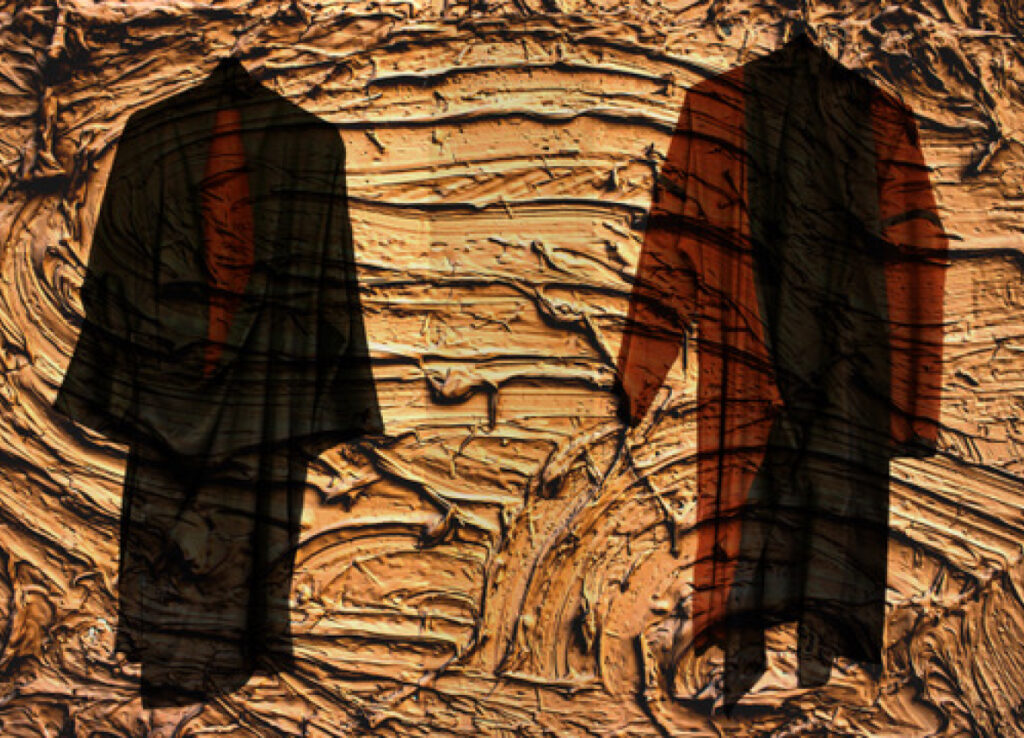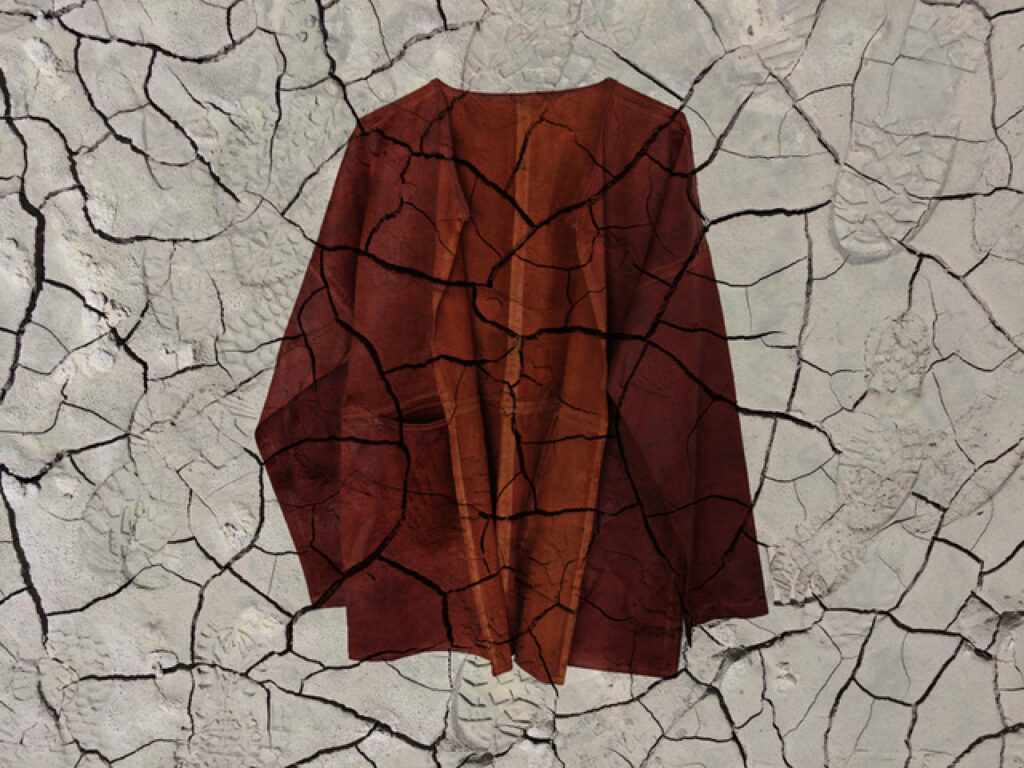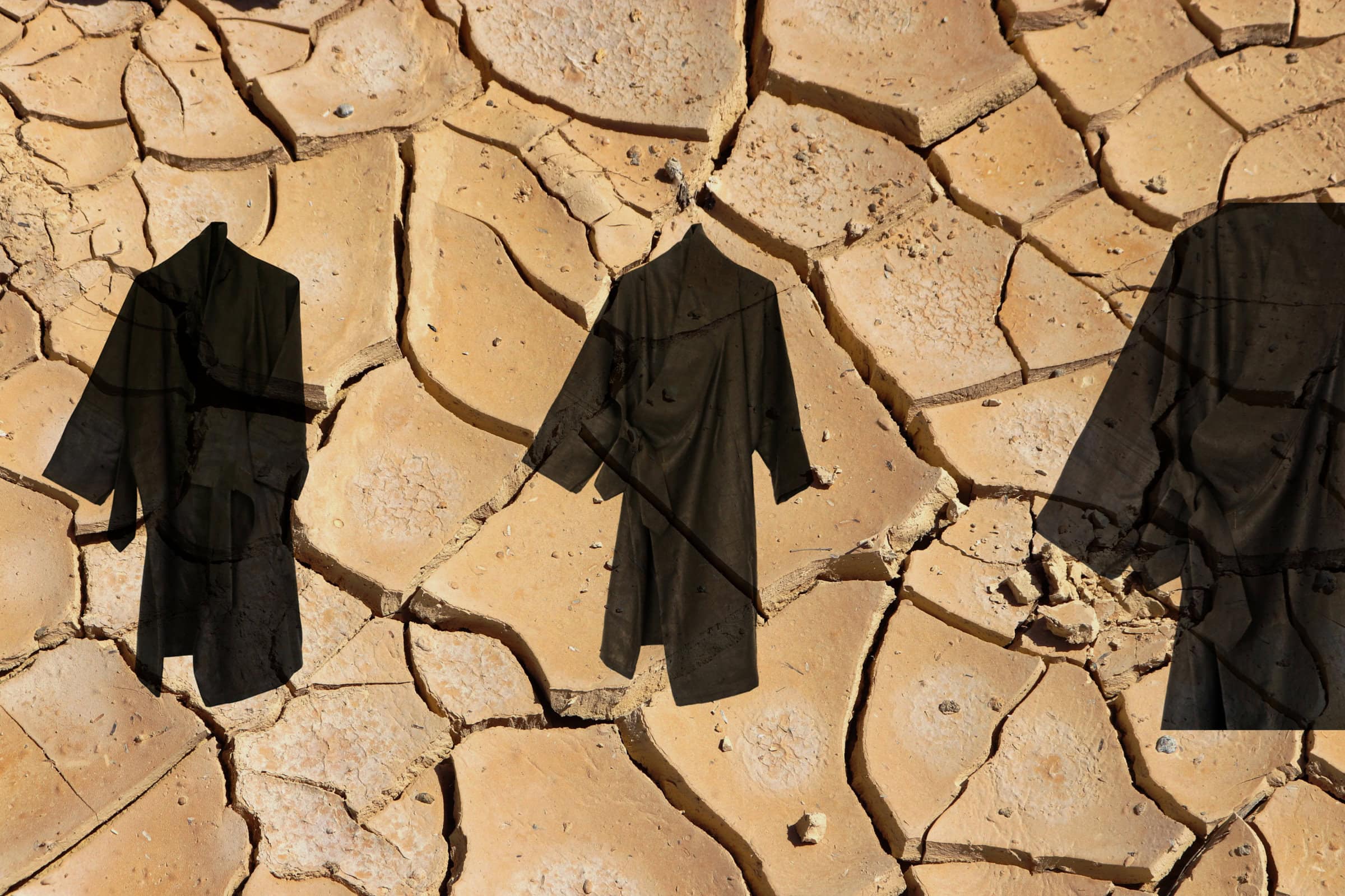
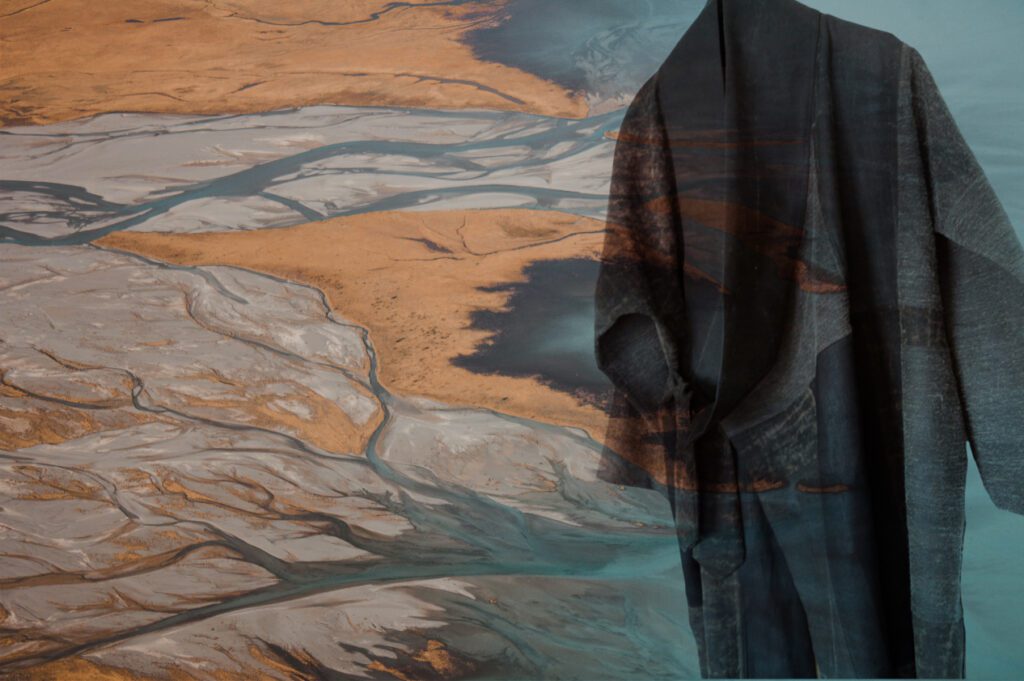
THE MATERIAL IS PULLED FLAT ACROSS A GRASS FIELD, WHERE IT IS EXPOSED TO SUNLIGHT. THE SILK IS WASHED IN A RUNNING RIVER AND DRIED AGAIN. THE DYED SILK IS THEN PAINTED WITH BLACK MUD AND EXPOSED TO THE EARLY MORNING SUN.
I will never forget the scene: ten years ago, I was sitting in a very dark restaurant in Beijing when I heard the sound of a woman’s pants as she moved through the room. The fabric in question was unlike anything I had ever seen: it looked like leather, paper or even liquid. Sheer but not transparent, fluid yet with enough body…magic.
The fabric is a rare type of silk with a long list of names: Perfumed cloud silk, Xiangyun Sha (香云纱), Liang Chou 莨绸, Chou zai, Liang Sha, Bamboo Sha, tea silk, lacquered silk, Canton silk, mud cloth, gummed silk, Gambiered Canton Gauze, “clothing that makes a noise when the body moves”, “clothing that makes people feel like floating clouds”, “singing silk cloth” and “soft gold”.
Mud silk has two sides: a glossy black front resembling leather or paper, and the back, a matte orange-brown. The back color is achieved using Dioscorea cirrhosa from Guandong, a medicinal tuber known for its antibacterial properties. This side has a thin, dark, resin-like film on its surface, which has water resistant properties. Properly aged mud silk is as rare as fine wine and sought after by collectors worldwide.
The base textile, traditional southern Chinese silk, is made by hand in a closed-loop ecosystem. Silkworms who spin the superfine threads eat the leaves of mulberry trees planted alongside ponds, their excrement falling into the water. Fish in the ponds eat this excrement, and in turn, fertilize the mulberry trees.
Mud silk is a sustainable textile. It begins with silk threads (a renewable resource), and is manufactured using natural plant dyes, river mud, space, sunshine and the hands of many people. Artisans dip a piece of 20-meter white silk into a dye vat suffused with powdered yam and let it soak until it is suffused with a coppery brown hue. The material is pulled flat across a grass field, where it is exposed to sunlight. The silk is washed in a running river and dried again. The dyed silk is then painted with black mud and exposed to the early morning sun, activating a chemical reaction to create its special color. When the mud dries, artisans wash the silk again, and re immerse it in the dye. The process of exposing, washing and dyeing is repeated 30 to 40 times before the fabric is complete. A single 20-meter length piece can take a week to create.
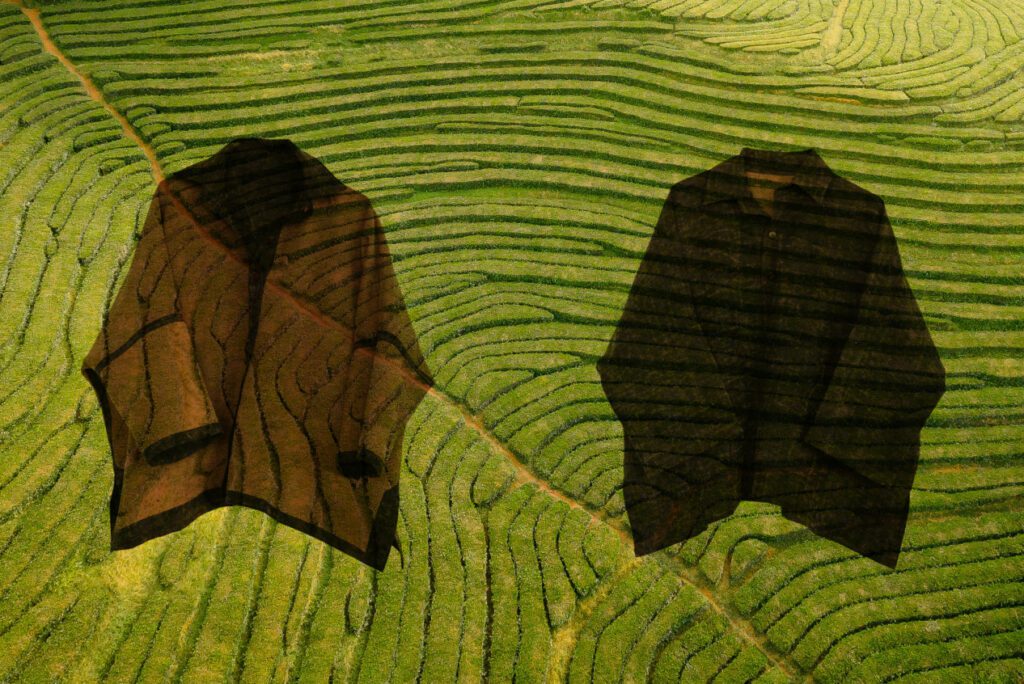
Mud silk dates back to the fifth century, when fishermen noted that their nets, treated with yam juice from a fibrous native tuber (dioscorea cirrhosa) escaped rot, turning black from contact with river mud. These treatments were adopted and applied to silk, and this tradition has been sustained in the region, where subtropical river deltas carry a special iron-rich mud that binds to the silk. Iron is the fourth most abundant element in the Earth’s crust, and it leaches into freshwater rivers, lakes and ponds from the soil and weathered rocks. Mud silk, cured by water, minerals and light, carries the trace smell of earth after rain. Climate change and over-exploitation have altered the iron content of rivers and altered seasonal patterns, making it difficult for artisans to forecast conditions for fabricating mud silk. Liang Zhu is the owner of one of the few centers in the world that can still make genuine Guangdong silk gauze in Shunde in South China´s Guangdong Province. An inheritor of the tradition, he says: “I live at the mercy of weather.”
Mud silk has been made and valued in China for more than a millenium. Used since the fifth century by Hakka people in Guangdong, it was prized as a luxury during the Ming Dynasty between the 14th and 17th centuries. Fabrication of gummed silk now extends beyond China, as its manufacture is possible wherever there are tannin-rich river deltas, intense sunshine and base colorants, such as gambier (uncaria gambir), ju-liang root, or indigo. In 2009, this ancient textile process was recognized when UNESCO identified the technique of dyeing xiang yun sha in Shun De as an exemplar of Intangible Cultural Heritage, a “tradition or living expression inherited from our ancestors and passed on to our descendants” . Mud silk has been a textile luxury for hundreds of years. A symbol of resilience and sustainability, mud silk is living history: worn, used and treasured.
Marcella Echavarria honors mud silk with Noir Handmade, a personal project which combines her interest in preserving ancestral heritage textile techniques and a love of design. Noir is a one size, seasonless, reversible, unisex clothing label made to layer and to last.
Learn more at noir-handmade.com

